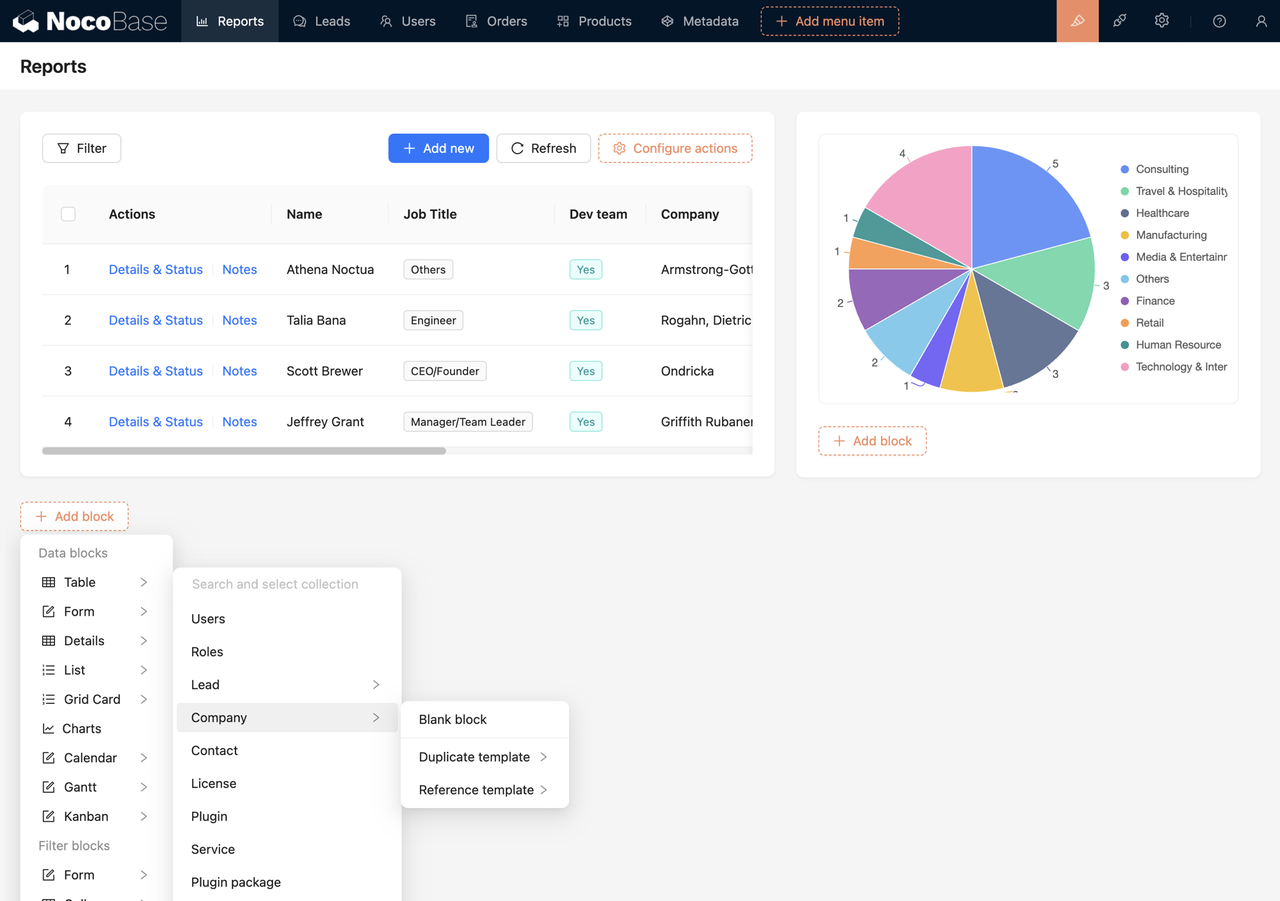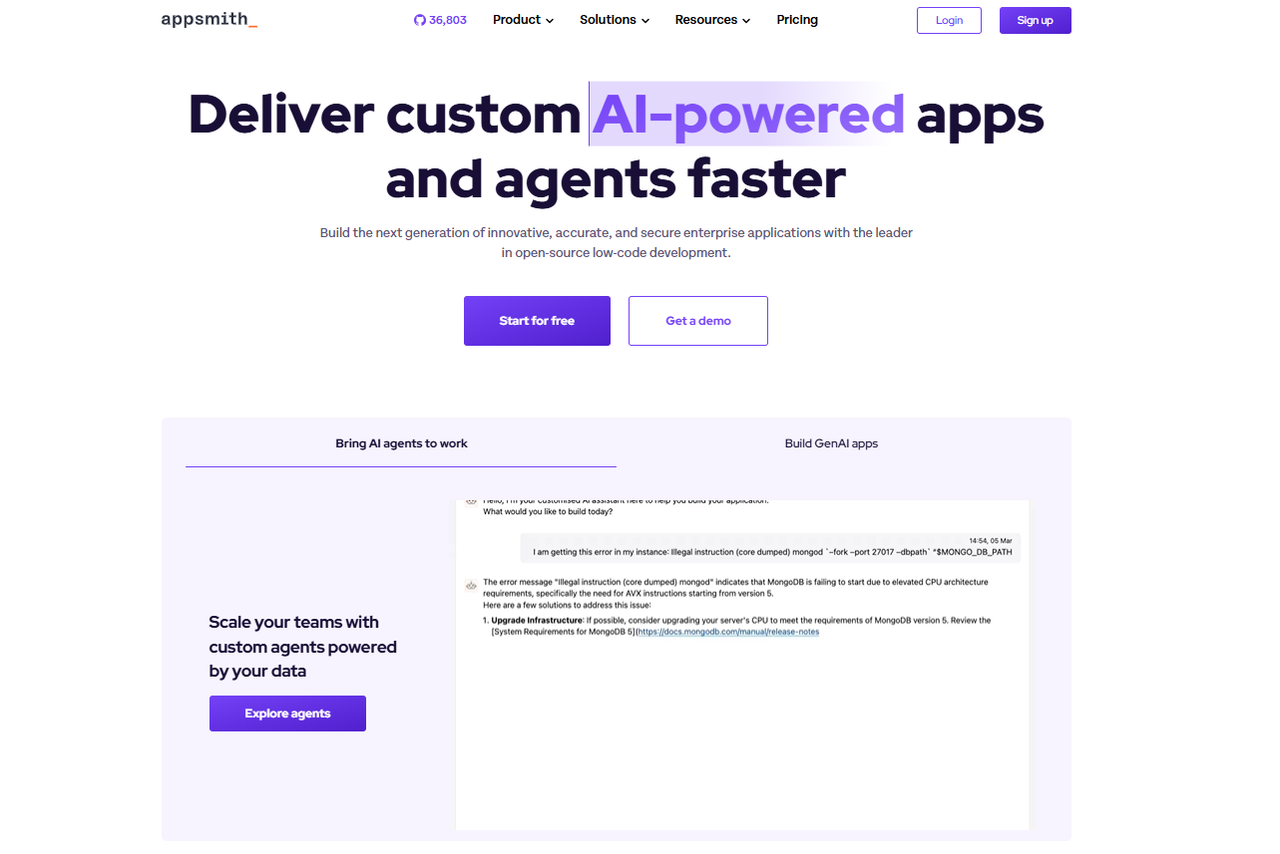Introduction
Building a web application has never been an easy task. Front-end, back-end, database, authentication, and deployment - each step is fraught with potential pitfalls, consuming both time and mental energy. If you’ve ever found yourself debugging late at night to the point of questioning your life choices, you surely understand the pain of the traditional development process - it’s complex, lengthy, and costly.
Now, an increasing number of open-source tools are changing the game. They allow you to skip the cumbersome setup process and focus on refining your product and validating your ideas. In this article, from a developer’s perspective, I’ll select 8 truly useful open-source tools that will enable you to build web applications faster and more easily.
💬 Hey, you’re reading the NocoBase blog. NocoBase is the most extensible AI-powered no-code/low-code development platform for building enterprise applications, internal tools, and all kinds of systems. It’s fully self-hosted, plugin-based, and developer-friendly. → Explore NocoBase on GitHub
How to Evaluate Open-Source Web Development Tools?
When choosing a tool, don’t just rely on the official website’s promotion. What truly matters is whether it can solve practical problems and provide a good development experience.
Mainly consider the following aspects:
- Complete functionality, covering core requirements such as front-end and back-end, database, and permissions.
- User-friendly, with clear documentation and comprehensive demos.
- Active community, so that you can find people/resources to solve problems when they arise.
- Strong extensibility, allowing for flexible adjustment according to actual needs.
- There are real-world cases, not just half-baked products staying in the laboratory.
The 8 tools to be introduced next have been selected based on these strict criteria.
8 Recommended Open-Source Web Application Development Tools
1. NocoBase – A Data Model-Driven No-Code Platform
GitHub Information
- ⭐️ 15.5k
- GitHub: https://github.com/nocobase/nocobase
- License: AGPL-3.0
Highlighted Features
- Data Model-Driven: With data modeling at its core, it supports flexible definition of data structures and complex relationships, adapting to the data organization and expansion needs of enterprise-level applications, especially suitable for scenarios that require in-depth data management.
- Plugin Architecture: NocoBase adopts a “microkernel + plugin” architecture, provides REST API for integration with external systems, and supports integration with multiple databases. Developers can have full control over the underlying code and data model, meeting personalized customization needs.
- Fine-Grained Permissions and Workflow: It has a built-in role-based fine-grained permission system, supporting field-level and API-level permission control as well as multiple authentication methods. Through the plugin-based workflow engine, it realizes BPM-level process automation, supporting visual process editing, event-driven and custom logic expansion.
Who Is It Suitable For?
Enterprises that hope for in-depth customization and flexible expansion, especially technical teams that want to quickly launch internal systems such as CRM, ERP, approval workflows, and project management, and need to have full control over data and respond quickly to business needs.
Why Is It Recommended?
In actual development, the most significant feeling is that “a large amount of time for basic setup has been saved.”
For example, when building an approval workflow management backend, in the past, it would take at least several days to write the database modeling, permission system, and interface design by oneself. With NocoBase, the basic system can be completed in half a day, and the remaining time can be focused on optimizing the business logic.
Moreover, the plugin mechanism is really convenient. For requirements such as the process engine and data linkage, there is no need to reinvent the wheel. Just install a plugin and it can be used, which greatly improves development efficiency.
Precautions
If your project requires extremely complex and highly personalized data logic (such as dynamic changes in the data table structure), it is best to plan the data model in advance before using it, because significant structural adjustments later may bring certain migration costs.
2. Appsmith – A Low-Code Platform for Quickly Building Operation Backends
GitHub Information
- ⭐️ 36.9k
- GitHub: https://github.com/appsmithorg/appsmith
- License: Apache-2.0
Highlighted Features
- Visual Interface Building: It has a large number of built-in UI components (tables, forms, charts, etc.), and the interface can be quickly laid out by dragging and dropping. It supports custom JavaScript code, taking into account both efficiency and flexibility.
- Powerful Integration Capability: It is compatible with multiple databases, cloud services, and APIs. After users configure the data source once, they can reuse it in multiple applications, facilitating data reading, writing, and interaction.
- Function Expansion and Security: JavaScript logic can be directly written in the interface controls, with a high degree of freedom. And it provides enterprise-level security guarantees, supporting deployment on local servers.
Who Is It Suitable For?
Internal development teams of enterprises, small and medium-sized companies, and freelance developers, especially suitable for scenarios such as quickly building internal management systems, dashboards, and data entry platforms.
Why Is It Recommended?
After actually using it, I feel that “interface development is worry-free and beautiful.”
The conventional approach for building a backend project requires designers to cooperate in drawing the interface and front-end developers to carefully restore it. Appsmith directly skips these steps for me: drag a few forms, configure the data binding, and a beautiful management interface can be completed in dozens of minutes.
Especially, it is possible to directly write JS to handle complex logic. It is neither limited by templates nor requires development from scratch, which is very flexible.
Precautions
Although drag-and-drop development is very fast, when the project scale becomes larger and the interface becomes more complex, the management of the component tree and the data flow across components will become a bit chaotic. It is recommended to plan the interface structure and naming conventions in the early stage, otherwise, it will be a bit more difficult to maintain later.
3. Budibase – A Platform for Quickly Building Enterprise-Level Applications
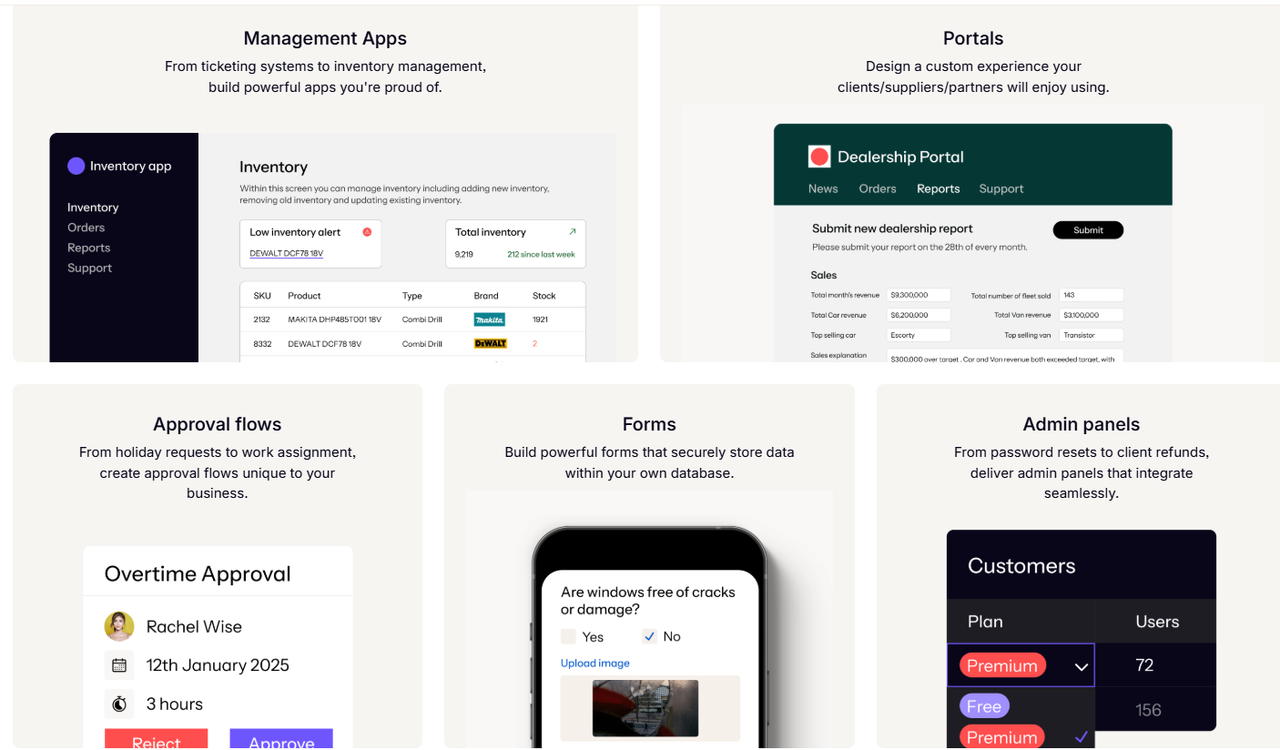
GitHub Information
- ⭐️ 24.4k
- GitHub: https://github.com/Budibase/budibase
- License: GPLv3
Highlighted Features
- Support for Multiple Data Sources: It has a built-in database and can also connect to external SQL, REST API, Airtable, etc.
- Customizable Automation Processes: Define business processes through triggers and actions, saving a lot of backend development work.
- Multi-Tenant Support: It has a built-in multi-tenant architecture, suitable for SaaS scenarios where applications need to be deployed for different customers.
Who Is It Suitable For?
Developers who hope to quickly develop internal tools and small SaaS applications, especially project teams that are short on time, need to deliver quickly, and still want to maintain a certain degree of freedom.
Why Is It Recommended?
In terms of the user experience, the most appealing point is “rapid construction.”
When building an asset management system, from data modeling to UI building, and then to the process setting of automatically sending emails, basically no backend code was written throughout the process, and it was completed in 4 days.
Precautions
Budibase’s support for particularly complex interface interactions (such as dynamically nested forms and multi-level linked tables) is not yet top-notch. If your project’s interface logic is very complex, you may need to manually expand custom components or use it in combination with other tools.
4. ToolJet – An Extensible Front-End Driven Low-Code Platform
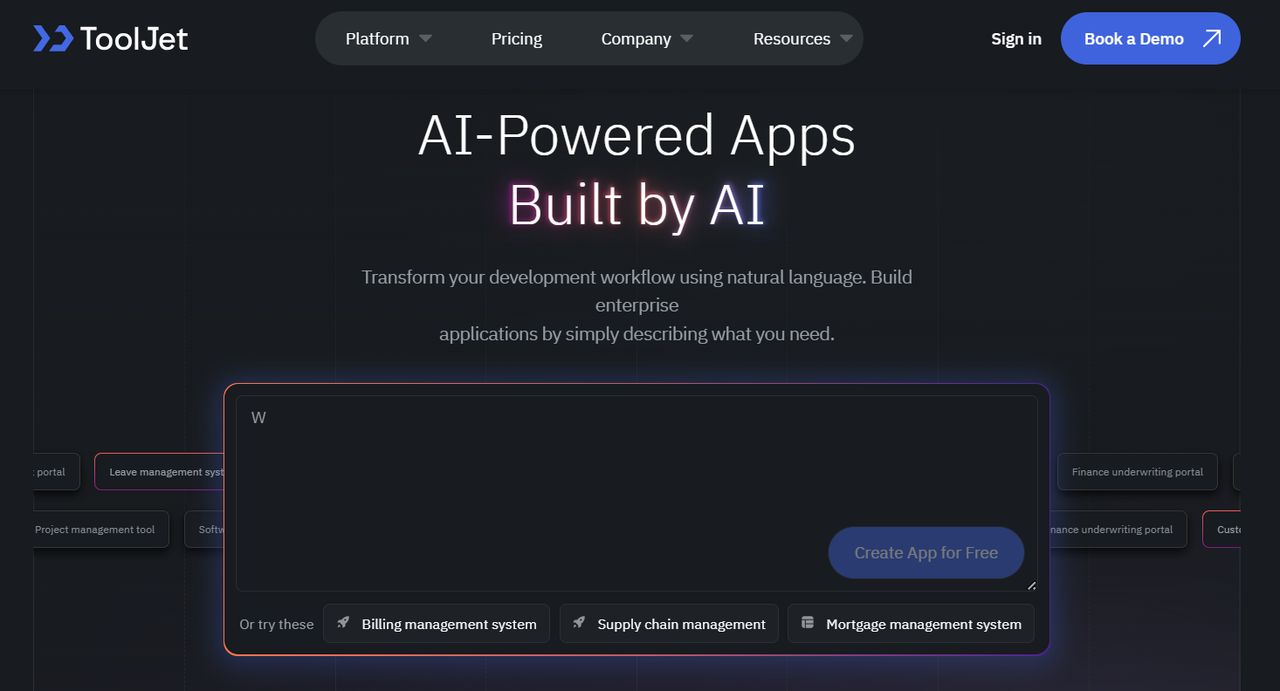
GitHub Information
- ⭐️ 35.6k
- GitHub: https://github.com/ToolJet/ToolJet
- License: AGPL-3.0
Highlighted Features
- Drag-and-Drop Interface Designer: Provides a rich set of basic components, with a smooth and natural layout.
- Built-in Query Editor: SQL queries or API requests can be directly configured in the backend, with strong control.
- Custom JavaScript Scripts: Supports writing JS within controls and action logic, greatly enhancing complex interaction capabilities.
Who Is It Suitable For?
Developers who want to quickly build internal dashboards, operation backends, and report management systems, especially suitable for projects with high requirements for data processing and data visualization.
Why Is It Recommended?
The biggest highlight is that data processing is really smooth.
When building an operation data backend, it involves more than a dozen different sources (MySQL, Google Sheets, external APIs). After connecting to each data source using ToolJet, the query and binding are completed in one go. Even complex data preprocessing can be directly processed by writing JS within ToolJet, saving a lot of backend development time.
Precautions
If you want to create a highly personalized UI, such as an interface with rich animations and micro-interactions, ToolJet’s standard components may seem a bit limited. You need to combine custom components or fine-tune it yourself.
5. Supabase – An Open-Source Alternative to Firebase
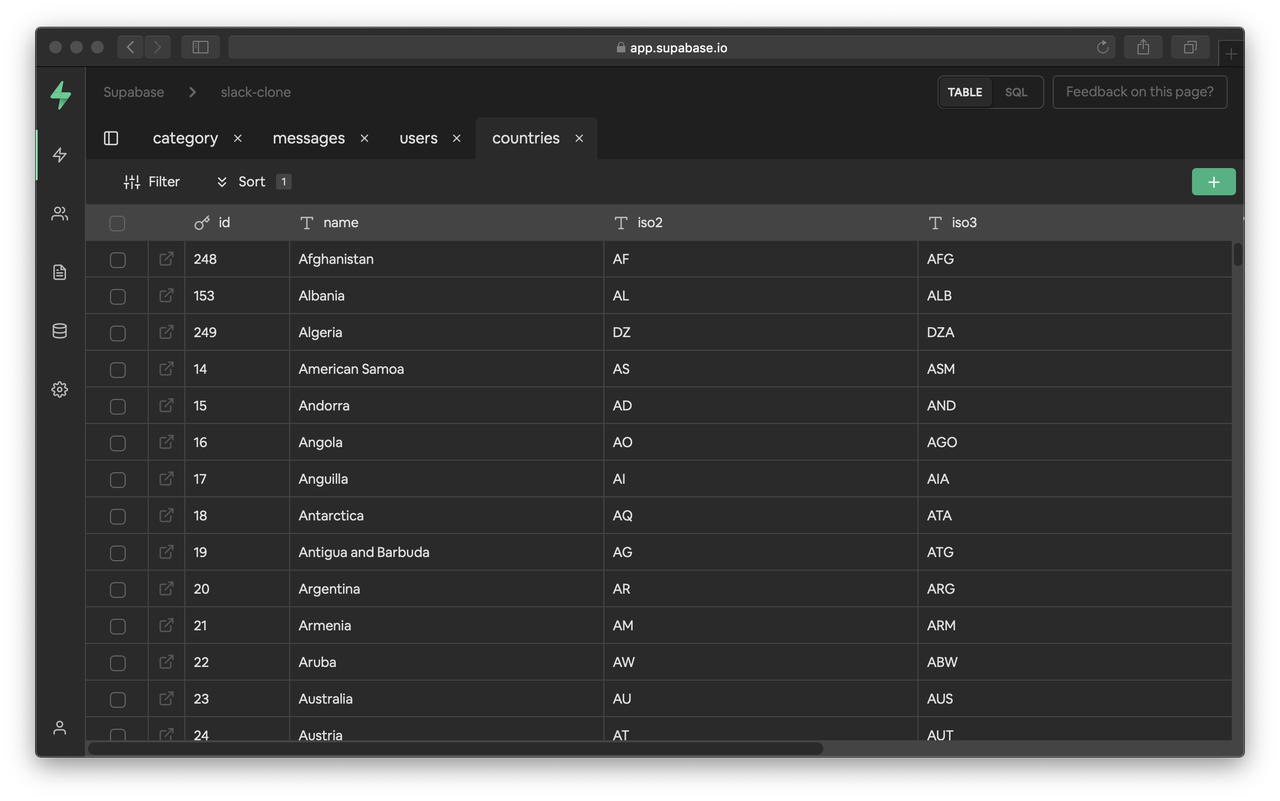
GitHub Information
- ⭐️ 82.2k
- GitHub: https://github.com/supabase/supabase
- License: Apache-2.0
Highlighted Features
- Ready-to-Use Backend: Provides a complete set of backend infrastructure including a hosted database (PostgreSQL), authentication, file storage, and real-time subscriptions.
- Automatic API Generation: Automatically generates RESTful and GraphQL APIs based on database tables, eliminating the trouble of writing interfaces.
- Rich SDK Support: The front-end integration is very smooth, supporting multiple language environments such as JavaScript, Flutter, and Python.
Who Is It Suitable For?
Web developers who hope to quickly build a usable backend and focus on front-end development, or startup teams looking for an open-source alternative to Firebase.
Why Is It Recommended?
Compared with traditional full-stack development, the development experience has been improved by an entire level.
With Supabase, even creating database tables can be done directly in the console with just a few clicks. User registration and login, as well as custom permission rules, are all built-in. Just connect the front-end SDK, and a login and registration process can be completed in 5 minutes.
Precautions Although Supabase is comprehensive in functionality, if you need to implement very complex backend business logic (such as cross-table transaction processing and complex multi-tenant permission control), you may still need to write some custom APIs yourself, otherwise, you may encounter limitations in expansion.
6. Refine – An Application Development Framework Based on React
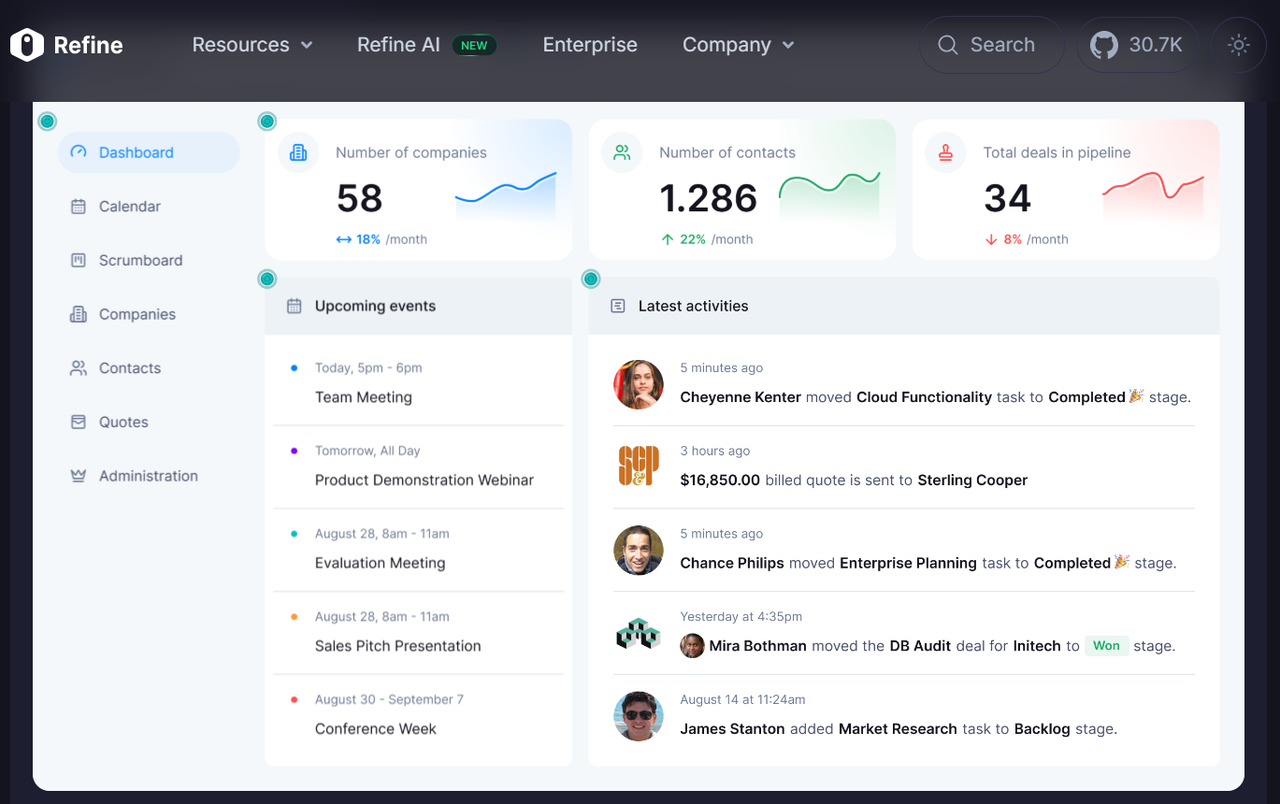
GitHub Information
- ⭐️ 30.8k
- GitHub: https://github.com/refinedev/refine
- License: MIT
Highlighted Features
- Extreme Customizability: Each layer (UI, routing, data source, permission) can be replaced or extended as needed.
- Rich Data Source Adapters: It has built-in support for REST API, GraphQL, Supabase, Strapi, NestJS, etc.
- Plug-and-Play Interface Framework: It is compatible with Ant Design, Material UI, and Chakra UI, and can be used directly.
Who Is It Suitable For?
Professional developers and technical teams who need to build complex backend systems or internal tools and hope to have a highly controllable front-end experience.
Why Is It Recommended?
Refine really seems to be a development tool tailored for “front-end-savvy” developers.
When building a backend system, the biggest problem is often not building the interface, but permission management, data source management, and extensibility.
With Refine, I can directly use my favorite UI framework, and the data connection is also modular, with almost no learning curve.
Precautions Refine is very flexible, but this flexibility also means that a certain level of React foundation is required. Complete beginners may take a little longer to get started. And if the project is particularly simple (such as just building a small form application), Refine may be a bit overkill.
7. Wasp – A Configuration-Based Full-Stack Development Framework
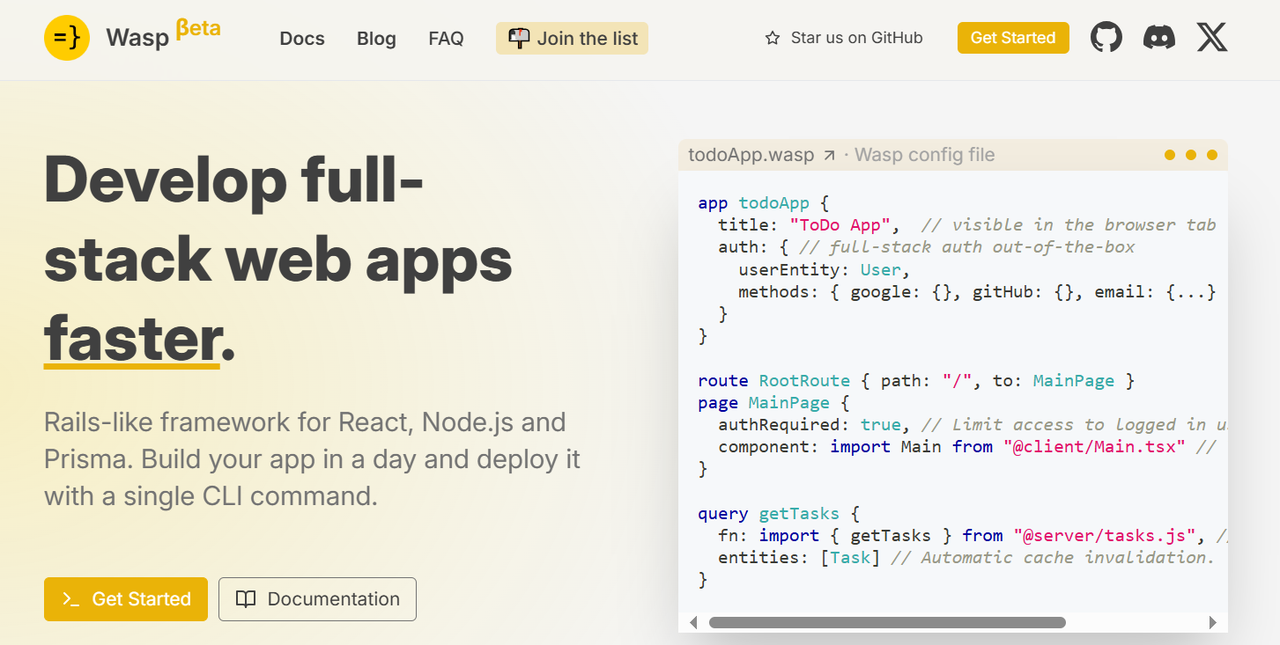
GitHub Information
- ⭐️ 16.8k
- GitHub: https://github.com/wasp-lang/wasp
- License: MIT
Highlighted Features
- Custom Declarative Language: Define routes, authentication, and database models through.wasp files, greatly simplifying the project setup process.
- React, Node.js, and Prisma at the Bottom Layer: Developers can flexibly control the front-end and back-end logic without being restricted by the framework.
- One-Click Deployment Support: It integrates common deployment platforms such as Vercel, Render, and AWS.
Who Is It Suitable For?
Developers who want to quickly build a complete full-stack application but don’t want to be overwhelmed by the cumbersome configurations of traditional full-stack scaffolds, especially suitable for individual developers or small startup projects.
Why Is It Recommended?
The experience is particularly smooth, especially in the prototype stage.
When working on an MVP small project with Wasp, only a few lines of configuration are needed to describe the pages, routes, and database models. The rest is automatically generated, with integrated front-end and back-end, saving at least 60% of the setup time.
Precautions
Currently, Wasp is still in rapid iteration. Although the basic functions are stable, for some very complex customization requirements (such as extremely complex permission systems and large-scale multi-tenant support), it may be necessary to carry out in-depth expansion by oneself.
8. Directus – An Open-Source Headless CMS
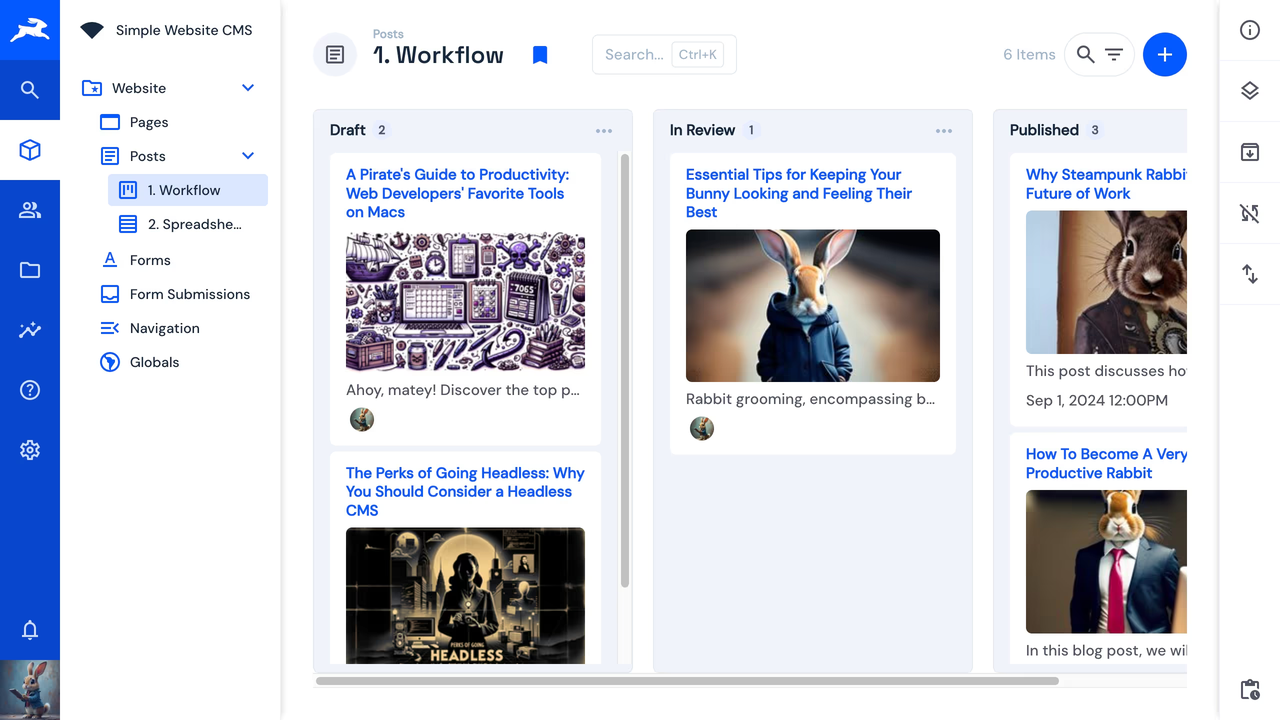
GitHub Information
- ⭐️ 30.3k
- GitHub: https://github.com/directus/directus
- License: GPL-3.0
Core Highlighted Features
- Instant API Generation: Whether it is MySQL, PostgreSQL, or SQLite, as long as the database is connected, REST or GraphQL APIs can be generated with one click.
- Super Strong Backend UI: It comes with permission management, version control, and data relationship visualization, and there is almost no need to build a management system by oneself.
- Plugin Mechanism and Custom Expansion: Functions can be flexibly expanded using Hooks, Extensions, etc., to meet complex business requirements.
Who Is It Suitable For?
Developers or small teams who want to quickly expose database content as “API + backend” seamlessly, especially suitable for building CMS, management panels, and data-driven applications.
Why Is It Recommended?
Directus is almost a perfect combination of low-code and traditional development.
Previously, when building an API, I had to write Express.js myself, and when building a backend, I also had to configure Ant Design. But with Directus, it only took half a day: connect to the database, click on the configuration, the API was automatically generated, and the backend system was directly available, even with ready-made role permission control.
Precautions Although Directus configuration is very flexible, if encountering extremely complex businesses (such as deeply customized front-end processes and multi-level linkage logic), sometimes a certain degree of secondary development is still required, and it is not completely “ready-to-use”.
Conclusion: Choose the Most Suitable Development Tool for You
By now, you may have realized that there is no single tool that can fit all scenarios.
If you ask me: “Which one should I choose?”
My answer is: Choose the one that best suits your project’s rhythm and your team’s habits.
- If you want to quickly build internal systems and backend applications and hope to write as little code as possible, NocoBase, Appsmith, ToolJet, and Budibase are all super-efficient choices.
- If you need a stable and free data backend, prioritize APIs, and also want to save the trouble of building a backend, you can give Supabase and Directus a try.
- If you have some front-end experience and want to have more refined control and build your own data applications, Refine and Wasp are definitely worth a try.
- If you hope to balance low-code development and enterprise-level expansion and want to have flexibility for the future, NocoBase has great potential.
Don’t hesitate. Choose a suitable tool and get started!
Related reading:
